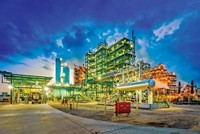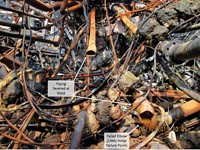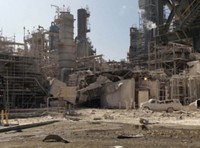Advertisement
Grab your lab coat. Let's get started
Welcome!
Welcome!
Create an account below to get 6 C&EN articles per month, receive newsletters and more - all free.
It seems this is your first time logging in online. Please enter the following information to continue.
As an ACS member you automatically get access to this site. All we need is few more details to create your reading experience.
Not you? Sign in with a different account.
Not you? Sign in with a different account.
ERROR 1
ERROR 1
ERROR 2
ERROR 2
ERROR 2
ERROR 2
ERROR 2
Password and Confirm password must match.
If you have an ACS member number, please enter it here so we can link this account to your membership. (optional)
ERROR 2
ACS values your privacy. By submitting your information, you are gaining access to C&EN and subscribing to our weekly newsletter. We use the information you provide to make your reading experience better, and we will never sell your data to third party members.
Safety
Accidents Lead To Refinery Review
Safety: Chemical board to investigate HF role in accidents
by Jeff Johnson
December 11, 2009

A string of refinery accidents involving hydrogen fluoride has led the Chemical Safety & Hazard Investigation Board to begin an examination of the chemical’s use at some 51 U.S. refineries, CSB Chairman John S. Bresland announced on Dec. 8.
Investigation Details:
CITGO Refinery Hydrofluoric Acid Release and Fire
Quicktime Video
Windows Video

Investigation Details:
CITGO Refinery Hydrofluoric Acid Release and Fire
Quicktime Video
Windows Video
Investigation Information
Half of the 16 accidents CSB is currently investigating occurred at refineries, Bresland said. “That is way too many,” he said, noting that several accidents involved HF.
Speaking at a press conference in Corpus Christi, Texas, Bresland explained that one of those accidents—at a nearby Citgo refinery last July (C&EN, July 27, page 37)—has resulted in a board order that the company immediately review the safety of its HF units.
About one-third of U.S. refineries use HF as an alkylation catalyst to make high-octane fuels. HF becomes hydrofluoric acid when exposed to moisture and is a contact poison that burns skin, tissue, and eyes and can cause death.
At Citgo, a blocked control valve led to an explosion and fire that injured two workers and burned for two days, exhausting the refinery safety system, according to CSB. At least 4,000 lb of HF migrated off-site, says Robert Hall, CSB investigation supervisor. Fortunately, it drifted over an unpopulated channel.
The amount that exited the plant boundary is an estimate, Hall stresses, because about 42,000 lb in total was released during the accident, and CSB is unsure how much was captured by safety systems. Citgo relies on a water-spray system as the last line of defense to absorb HF vapor, but within hours the on-site water supply was exhausted. The refinery turned to a supplemental system that pumps saltwater from the nearby channel, but transfer piping ruptured and pumps failed, Hall notes.
Citgo claims that only 30 lb of HF was released, basing that determination on an on-site monitoring system. Hall disagrees and says the monitors are at ground level and would not detect a release that is updrafted by heat.
Bresland and Hall are critical of Citgo’s cooperation with the investigation. Requests to the company for documents have been denied, they say, and the board has turned to a subpoena.
The company has also tried to block CSB’s release of a company surveillance video of the accident. In a letter to CSB, Citgo says the video would “sensationalize” the accident and is protected as “sensitive security information” under antiterrorism laws, similar to claims made by Bayer CropScience during a recent CSB investigation (C&EN, May 11, page 25).
In both cases, CSB turned to the Department of Homeland Security, which said CSB could make the material public.
In a statement, Citgo said it was acting to “preserve the security of our refinery,” adding that it had already complied with the board’s recommendations.
Final reports on the accident and refinery HF review will be completed by August 2010, the board says, adding that the review will include alternatives and ways to reduce on-site storage.





Join the conversation
Contact the reporter
Submit a Letter to the Editor for publication
Engage with us on Twitter